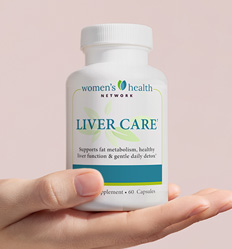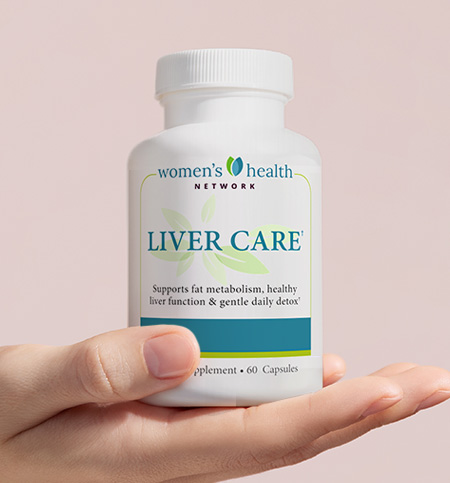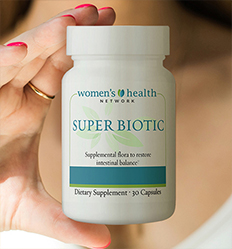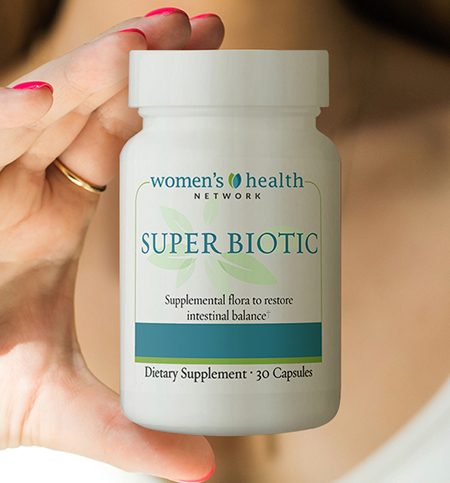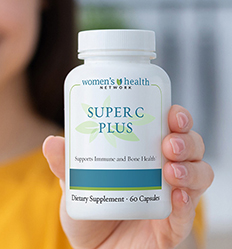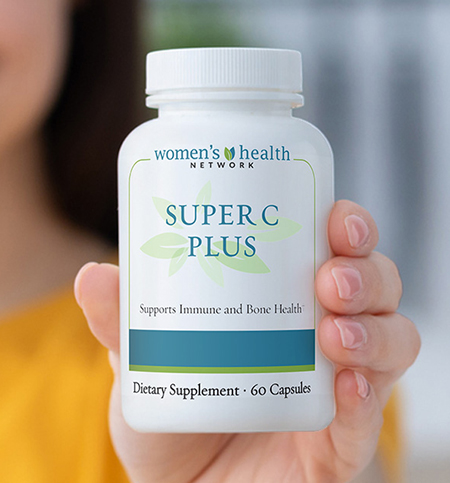Authored by Dr. Amber Hayden, DO
Table of contents
Your body is detoxifying right now
Your body is detoxifying all the time. The natural processes of metabolism create streams of waste that must be eliminated — but that’s not all. We’re also ingesting, inhaling and absorbing pathogens, chemicals, allergens and other toxins from the environment around us. The body must work continually to deactivate and eliminate these harmful substances.
The good news? The human body is remarkably successful at disassembling and removing the majority of toxic substances and metabolic wastes. However, when our toxin load turns into a toxin overload, our body’s detox pathways, especially in the liver, become overworked and eventually clogged.
Too many toxins = lots of potential symptoms
Usually, it’s only when our finely tuned detox systems can’t keep up that we see problems. If toxins build up inside the body, a wide range of effects are possible, with some potentially serious consequences.
Possible symptoms of internal toxicity:
- skin rashes
- sneezing
- insomnia or sleepiness
- fuzzy thinking
- bloating
- acne
- constipation
- joint pain
- chest pain
- allergy-like responses
- fatigue
- nausea
- hives
- coughing
- sinus congestion
- irritability
- indigestion
- wheezing
- backache
- headaches
Research shows a troubling link between the impaired ability to detoxify and a number of diseases, including cancer, Parkinson’s disease, fibromyalgia and chronic fatigue/immune dysfunction syndrome. But many other conditions are also related to toxicity in the body: thyroid dysfunction, arthritis, heart disease, eczema, allergies, asthma, cirrhosis, fibrocystic breasts, gastritis, pancreatitis, multiple sclerosis, Alzheimer’s disease… and the list goes on.
Did you know?
A common sign of excess toxins is unwanted weight gain. See what you can do to clear your body.
Detoxification imbalance is often at the root of a woman’s symptoms and health issues. It can also underlie other internal imbalances, including those involving digestion and inflammation — as well as a woman’s overall hormone balance.
The Women’s Health Network perspective on detox
Because our modern world exposes us to new poisons and substances — both naturally occurring and manmade — we see an increasing need for efficient and effective detox. Our experience has helped us develop a comprehensive approach to supporting detox for women. Healthy detoxification is based on two simple principles:
- Provide a steady supply of the raw materials your body needs (food, key nutrients, water and other fluids).
- Create living and working conditions that enhance your body’s ability to manage toxins.
We advise women to eat, drink, work, play and even rest, in ways that support their natural detoxification processes. Making smart choices that help you detoxify well will have a direct impact on both your short- and long-term health.
“Civilization is being poisoned by its own waste products.”
William Ralph Inge — author
Identifying sources of body toxicity?
In addition to the old-school toxins we’ve encountered for years, we now have an array of allergens, by-products, wastes, chemicals and organisms that our bodies simply do not know how to process. It’s true that the human body is amazingly adaptable, but our systems have not yet adjusted to these diverse “foreigners to life,” or xenobiotics. Instead, these outsiders become part of an enormous “toxic load” we carry indefinitely.
Where are all these toxins — old and new — coming from? They’re all around us — in the air, water, food and environment, and they may be disguised in some clever camouflage:
- Air, water and environmental pollutants (including jet fuel residue)
- Food contaminants, such as pathogens and by-products of certain industrialization processes
- Chemicals we absorb, inhale or ingest (from construction materials, furniture and flooring, clothing, cleaning supplies, personal care products, and more)
- Pharmaceutical medications (antibiotics, HRT, NSAIDs, etc.), recreational drugs, second-hand smoke and alcohol
- Radiation and electromagnetic fields
- Heavy metals, aluminum and toxic halides
- Hormones and endocrine disruptors
- Mold, mildew and “superbug” pathogens
- Free radicals
In addition, problems with detoxification can occur right inside us. Because the gastrointestinal tract is your body’s initial interface with a large percentage of the toxins it encounters, any chronic digestive issue can interfere with detox. If you have IBS, for example, you may have trouble detoxifying — but an imbalance in your gut flora can also limit your gut’s natural detox function.
“Resentment is an extremely bitter diet, and eventually poisonous. I have no desire to make my own toxins.”
Neil Kinnock, Welsh politician
What’s surprising is that we ourselves generate some of the strongest, or most reactive, poisons and toxins. Many lifestyle factors have a grave impact on health, including poor diet, low water intake, lack of exercise and inadequate rest. But emotions can be poisonous, too. Stress, anxiety, depression and even “toxic” relationships affect you physically and add heavily to the load your body is trying to detoxify.
Some people have innate limitations in their ability to detoxify. In some cases, these factors can be “pathological” (leading to disease) when left unaddressed. Either they’re born with genetic traits that interfere with healthy liver function (such as a GSTM 1 polymorphism) or normal metabolism of nutrients (for example, an MTHFR polymorphism), or they develop detox issues as a result of lifestyle influences or hormone imbalance during perimenopause.
Even under such challenging conditions, toxicity is not your destiny. There is a tremendous amount you can do — right away — to limit and offset the effects of toxins. And of course, stopping poisonous substances from entering your system in the first place should be a top priority.
Natural detoxification systems — the whole-body concept
Detoxification is accomplished by many internal systems and organs working in unison to identify, deactivate and eliminate toxic substances. These mundane reactions help clear out toxins and purify your internal environment.
- Respiration: breathing (gas exchange), coughing, sneezing, clearing mucus
- Skin: sweating, sebaceous (oil) gland secretion, tears
- GI system: liver function, intestinal tract function (our “first line” defense), including stool excretion
- Kidneys: acid/alkaline balancing, urination
- Circulation and lymph systems: blood flow, lymph circulation, node function
Because all these systems cooperate for whole body detoxification, problems in any one can allow toxins to accumulate, or interferes with the removal of highly reactive compounds, which can then move in and camp out in your organs and tissues.
Let’s take a closer look at how the job of detoxification is divided up.
Liver
The liver is the powerhouse of detoxification, since one of its primary functions is to isolate and biotransform toxic molecules so they can be eliminated. With its ability to create various enzymes and chemicals, the liver quickly deactivates most poisons you take in or create.
Kidneys
Your kidneys act as an advance filtering system to catch wastes and toxins circulating in your blood and eliminate them through urination. If this process becomes sluggish or begins to fail, poisonous substances build up, and your health can deteriorate rapidly. Supporting kidney function involves eating an alkalizing diet, with mineral-rich fruits and vegetables, and drinking plenty of pure water (distilled, filtered or spring). Alcohol, particularly in excess, can be very hard on the kidneys.
GI tract
For natural detoxification, there is nothing more important than good digestive health. Your gut is the gateway for most pathogens, but it is also your initial defense against toxins, germs and unwanted substances. Taking care of the GI tract starts with choosing non-toxifying foods, and results in better elimination — the prime vehicle for toxin removal.
Your GI tract is lined with a mucous membrane that, when healthy, forms an “intelligent” barrier that helps prevent toxins from entering your bloodstream and allows escaped xenobiotics to pass back into the intestines for elimination (called “antiporter” detox). Good GI health through proper diet can help keep this membrane intact and functioning well. A healthy supply of “friendly bacteria” in the gut helps you handle the food you eat and wards off any pathogens lurking in your food. Gut flora can also stop pathogens from re-entering your system until your body can dispose of the intruders.
When the gut isn’t healthy…
“Leaky gut syndrome” occurs when the lining of the GI tract becomes porous, allowing food particles to directly enter the bloodstream. Such particles are considered toxins by the immune system, so leaky gut can be the starting point for some food allergies and systemic inflammation. Reset your digestion.
Purging the poisons: how to support natural body detoxification
Moving the bowels regularly figures prominently in detoxification because stool transit time is not just a factor in your physical comfort. You want to keep things traveling along the digestive tract at the right pace so that your body has time to extract nutrients from food. But once that’s done, you don’t want waste lingering in your lower GI tract because toxins and poisons can be reabsorbed (sometimes called “auto-intoxication”). Adequate intake of fiber and water are key elements for bowel health.
Respiration
We breathe in life-giving oxygen and get rid of carbon dioxide, a waste product, when we breathe out. But the nose, lungs, bronchial tubes, throat and sinuses also filter, process and remove airborne toxins and inhaled pollutants.
Detox and hormone balance
When you follow a detox diet, you create better health in two of your most active hormone-balancing locations — the gut and the liver. A detox diet eliminates top food allergens and foreign substances to which your body may be reacting adversely. (These irritants disturb hormone balance by ramping up the immune response, spending raw materials better used elsewhere and clogging the liver’s detox pathways.) A detox diet also fosters beneficial bacteria in your gut and de-stresses your liver, which together can dramatically improve the body’s ability to handle its own hormones.
Supporting respiration-related detoxification is clear-cut: don’t smoke; avoid “congesting foods” such as red meat, refined grains and sweets; and get regular exercise. Yoga and other practices that emphasize deep breathing help you inhale more oxygen while massaging your internal organs.
Skin and dermal function
The saying “Don’t sweat the small stuff” does not apply to detox. The skin is very porous, so perspiring is a great way to get rid of toxins. You can work up a good sweat when you exercise, or enjoy a session in a sauna, steam shower, hot bath with Epsom salts or traditional Native American sweat lodge. We also recommend dry-brushing the skin to keep pores open and remove dead cells. Sebaceous glands and tear ducts help mobilize toxins out of the body too.
Because your skin covers so much territory, any poisons or allergens on your clothes can generate toxic reactions, so choose laundry and personal care products without harsh chemicals to help with sensitivities.
Lymphatic system
Your lymphatic system is your body’s best-kept detox secret — we call this amazingly complex network of channels and nodes the body’s “sewer system.” It interfaces with the rest of your internal systems at regular points throughout your body, circulating lymph fluid in one direction as it carries away metabolic wastes and poisons. Silent, percolating lymphatic flow is stimulated by exercise, deep breathing and regular body movement. Problems occur if lymph fluid does not flow freely, which traps toxins instead of ushering them out of the body.
We recommend avoiding extreme detox regimens such as
- Prolonged juice fasts
- Colon cleanses
- Colonics
- Coffee enemas
- Hours-long saunas
- Excessive doses of antioxidants or minerals
- Foot detox pads (Kinoki)
- “Mucoid plaque” removal
- Extreme or “amateur” chelation
Detox regimens to avoid
Typing the word “detoxification” into an internet search engine will return almost five million results. In 2008 alone, we were introduced to 54 new products with the word “detox” in their names. Crafty advertising may tempt you, but be careful! Many products and procedures are not based in science, and some may be downright unsafe.
When products simply don’t work, you’re out the money you spent. But we worry about ads for radical juice fasts and extreme colon cleanses. Using methods like these to compensate for poor diet and lifestyle choices can take a tremendous toll on your body without delivering on the rapid weight loss and “body purification” claims made in the advertisements.
Fasting is an age-old practice associated with many religious and spiritual traditions, and we believe that under planned and controlled circumstances, it can be fine. But extreme fasting is almost always bad for you, and can unleash toxins too quickly, making you feel awful. And if you’re considering fasting to lose weight, our advice is simple: don’t.
Support your ability to detoxify!
DON’T:
- Smoke or knowingly take in other poisons or toxins
- Use toxic cleaners and beauty products
- Eat processed foods
- Eat sugar, gluten or refined grains, artificial sweeteners, or trans fats
- Take unnecessary drugs
- Expose yourself to noxious chemicals and poisons
DO:
- Eat right and reduce red meat consumption
- Exercise to the point of sweating and to keep blood and lymph circulating well
- Get enough rest
- Address long-term emotional issues that cause tension, stress and worry. Try support groups, therapy or targeted techniques like the Hoffman Quadrinity Process.
- Try yoga to encourage deep breathing and improve elimination
- Keep your skin clean
The most elegant way to detoxify: naturally
The ability to detoxify naturally is a limited resource, and if you’re not choosing well when it comes to lifestyle, emotional health and diet, your system can quickly become overloaded. Maintaining good detox capability depends a lot on what you don’t do. If you avoid eating harmful foods and drinks, limit your caffeine and sugar intake, steer clear of drugs when possible, and beware of “toxic” emotional states, you’ll go a long way toward preserving your own natural detox capability.
Once you begin to detoxify, stored toxins and substances are released into the system for removal — so you may feel worse for a short period. But if you wait it out, this sensation passes and you will soon feel much better, and be rewarded with clearer skin, more energy and vitality, better sleep, fewer aches and pains, better bowel health, improved mental clarity, and loss of excess “toxic weight.”
How to support your natural ability to detoxify
Basic support for natural detoxification is like many things — simple, but not always easy to accomplish. You need to provide proper nourishment, with extra fruits and vegetables; avoid processed, refined and fatty foods; ensure steady hydration; and get lots of rest.
For additional support, consider some of these foods and supplements: a high-quality multivitamin/mineral complex, a probiotic supplement, antioxidants (vitamins C, A and E, but never in excessive amounts), glutathione, amino acids (methionine, L-cysteine, tyrosine, taurine), tea (all kinds) and essential fatty acids.
A wide variety of herbs also are known to support “natural cleansing” and detox ability, including garlic, red clover, Echinacea, dandelion root, sarsaparilla root, parsley leaf, goldenseal root, senna or Cascara sagrada, clove, eucalyptus and peppermint.
There is a lot to think about when it comes to managing and supporting your systems of detoxification. But we have seen the lives of so many women improve dramatically once they knew which toxic elements were contributing to their symptoms and health problems. Even if you start with just one or two adjustments, you’ll be moving in the right direction, and small changes can make a big difference!
Our Super 6: bonus tips for detox
- Pay attention to your overall detox capacity. Be mindful of “clearing out the clutter” of toxins that may interfere with your body’s metabolic conversation.
- Your body isn’t “dirty” — avoid aggressive colon cleanses, prolonged fasting and other extreme detox activities.
- Heal your gut first and foremost, starting with becoming aware of sensitivities and allergies. Your body makes its first pass at detoxifying in the GI tract and the more you can ditch then and there, the better. Try our two-week detox diet.
- Detoxify your emotions through therapy, acupuncture, massage and/or exercise. Try to resolve toxic relationships and choose enjoyable social activities as often as you can.
- Talk to a functional medicine practitioner about special testing to determine if you have a genetic polymorphism that affects your ability to detoxify. Take steps to support your liver function as necessary.
- Keep your house clean, and consider investing in air and water purifiers and filters. Change vacuum cleaner bags often, and use “green” cleaners and food storage.
References and further reading
Liska, D. 1998. The detoxification enzyme systems. Altern. Med. Rev., 3 (3), 187–198. (accessed 07.01.2009.
Ellin, A. 2009. Flush those toxins! Eh, not so fast. (accessed 06.30.2009).
Wikipedia. 2009. Xenobiotic. (accessed 07.01.2009).
Reference for textbox on detox and hormone balance
Christensen, M. 2008. Video: Can a detoxification diet help a hormone imbalance? (accessed 07.28.2009).







